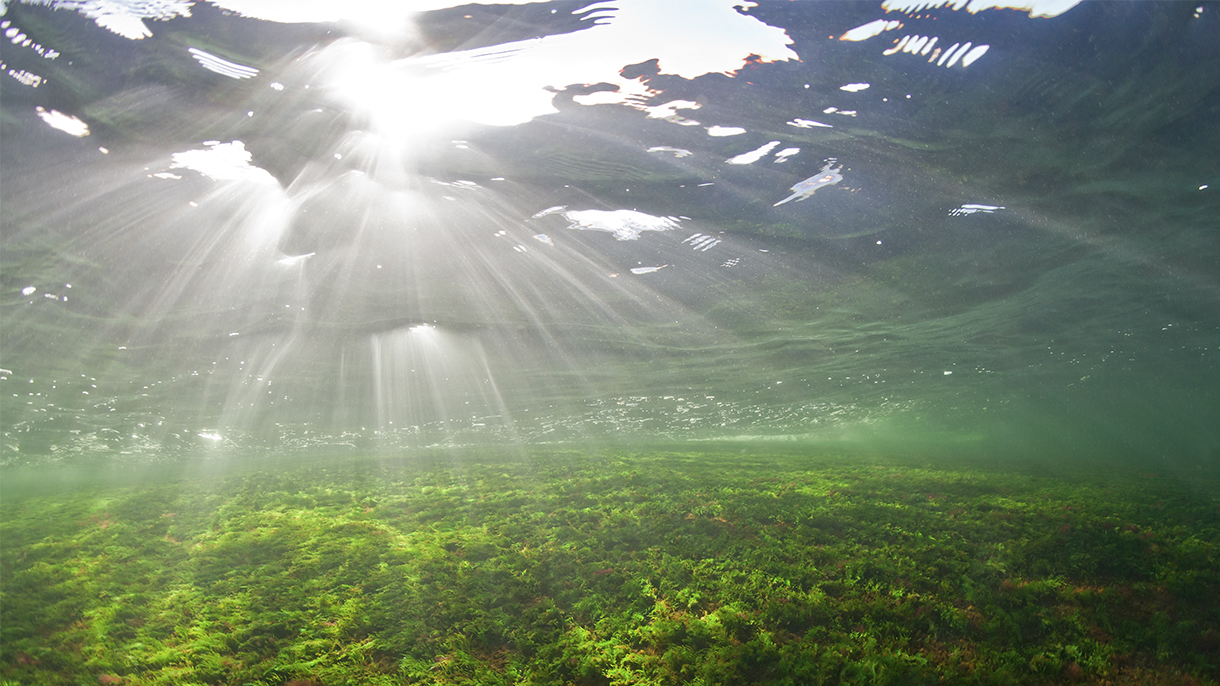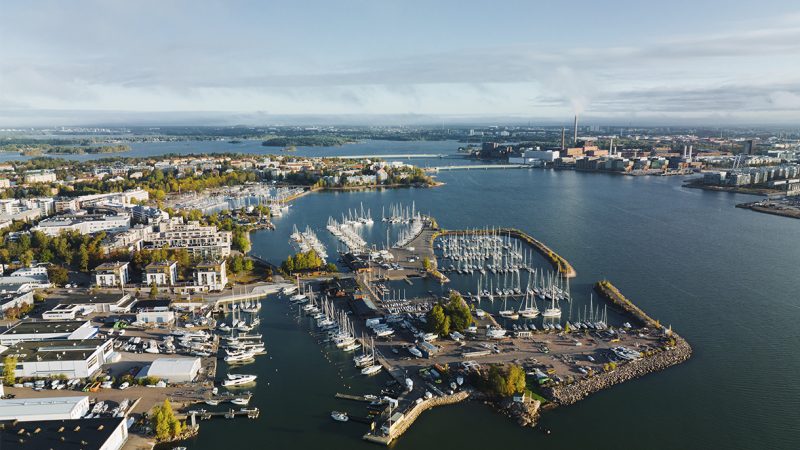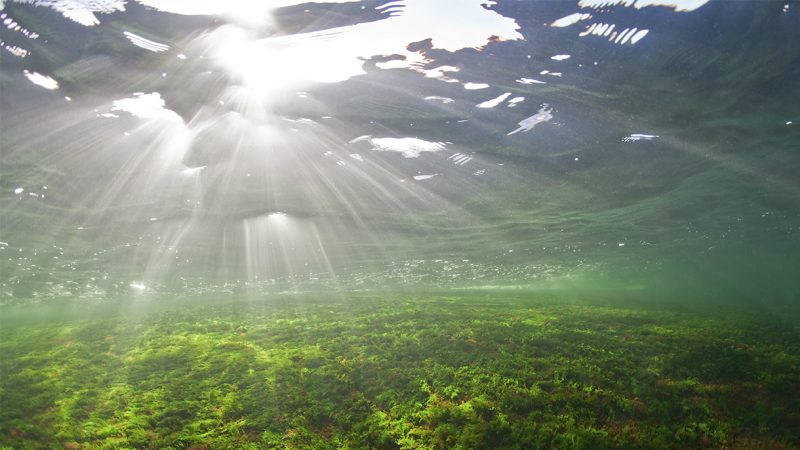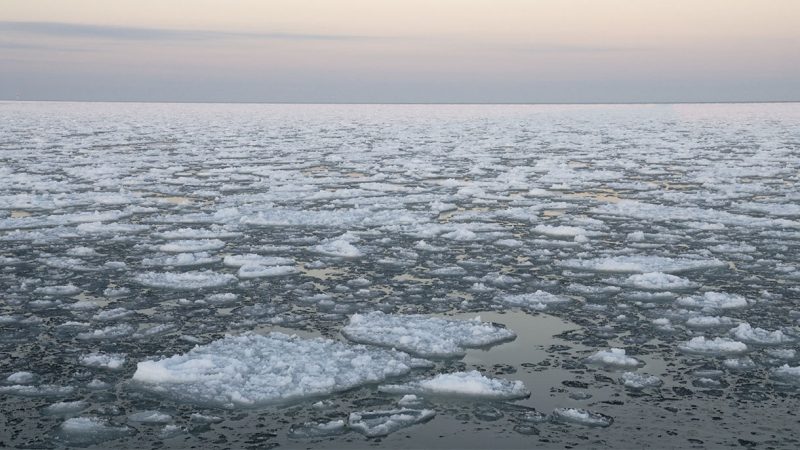Baltic Sea facts

The special characteristics of the Baltic Sea, including low salinity, shallowness and low total volume of water, make the sea vulnerable.
The Baltic Sea drainage basin
The drainage basin of the Baltic Sea refers to areas from which all surface and groundwater flows towards the Baltic Sea. Dozens of large rivers drain into the Baltic Sea, carrying loads of nutrients and emissions from a large area, including places far from the coast. In the drainage basin, the state of all water bodies will eventually also affect the Baltic Sea, as nutrients and harmful substances eventually end up in the sea through lakes and rivers.
The drainage basin of the Baltic Sea is large, four times the size of the sea. Nearly 90 million people in 14 different states live in the drainage basin. Nine countries border the Baltic Sea: Finland, Sweden, Denmark, Germany, Poland, Lithuania, Latvia, Estonia and Russia.

Average depth of the Baltic Sea
Compared to the ocean, the Baltic Sea is small, shallow and has a low total volume of water. The average depth of the Baltic Sea is only 55 metres, and the deepest point of the sea is in the Landsort Deep at 459 metres. The average depth of the oceans, on the other hand, is measured in kilometres.
Sea water temperature
The Baltic Sea is a cool-water sea, and global warming affects the sea in many ways. As winters become milder, a smaller part of the Baltic Sea freezes over in the winter. The decrease in the number of days when the sea is frozen and the warming of sea water affect the marine life of the Baltic Sea.
Warm water and plentiful phosphorus nutrients promote the growth of blue-green algae in particular. The temperature of sea water also has an effect on oxygen depletion at the bottom of the sea, as oxygen consumption on the seabed increases in warmer water.
Salinity of the Baltic Sea
The water in the Baltic Sea is low-salinity brackish water – a unique blend of salty ocean water and fresh water from rainfall and numerous rivers. The salinity of the Baltic Sea’s water is, on average, only about one-fifth of that of the oceans. In the Bay of Bothnia and at the end of the Gulf of Finland, the water is almost fresh. The Baltic Sea is the second largest brackish water sea in the world, second only to the Black Sea.
The Baltic Sea’s connection to the ocean via the Danish straits is narrow, which is why only small amounts of salty ocean water enter the sea. Due to the narrow connection to the ocean, the water in the Baltic Sea also changes slowly. It is estimated that it takes about 30 years for the entire volume of water in the Baltic Sea to change. Because of this, environmental toxins and nutrients that eutrophicate the Baltic Sea remain in the sea for a long time.

Water in the Baltic Sea is stratified
The Baltic Sea is permanently stratified according to the salinity of water. Salty water flowing from the North Sea through the Danish straits is denser than fresh water and sinks to the seabed and deeper parts of the Baltic Sea. Low-salinity water diluted by rainfall and the numerous rivers remains on the surface of the sea. The bottom and surface water masses are separated by the halocline, a layer of water in which salinity changes rapidly.
The surface water of the Baltic Sea is also stratified based on temperature. In the summer, cold water sinks deeper while a warmer layer of water remains close to the surface. Water is at its densest, or heaviest, when its temperature is around four degrees.
Oxygen depletion
Winter and autumn storms and strong winds effectively mix oxygen-rich surface water with deeper layers of water. However, due to stratification, the effects of storm winds do not extend below the halocline, and oxygen-rich water is unable to reach all the way to the bottom of the sea. The deeper parts of the Baltic Sea are frequently deprived of oxygen, which is further exacerbated by eutrophication of the sea. As a result of eutrophication, the Baltic Sea’s deep parts suffer from continuous oxygen depletion, and large parts of the seabed are devoid of oxygen and lifeless.
Saline pulse
Occasionally, about once a decade, a large amount of salty and oxygen-rich ocean water flows from the North Sea and reaches the deep parts of the Baltic Sea under suitable weather conditions. This flow is referred to as a saline pulse. When this occurs, the oxygen situation in the deep parts of the sea is temporarily improved. However, if the oxygen-depleted area is large, the pulse of oxygen-rich water is not always sufficient to improve the situation on the seabed for very long.

Photo: Raimo Sundelin
